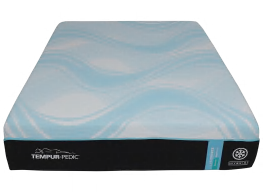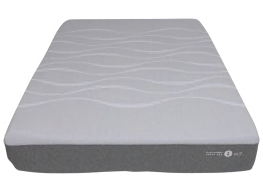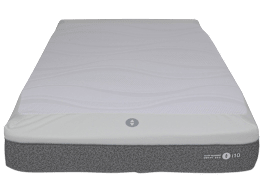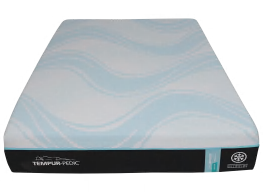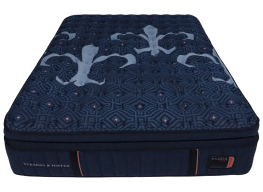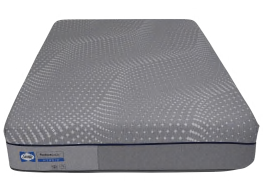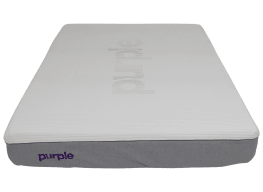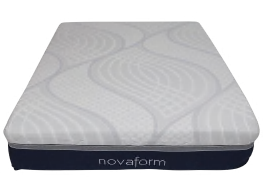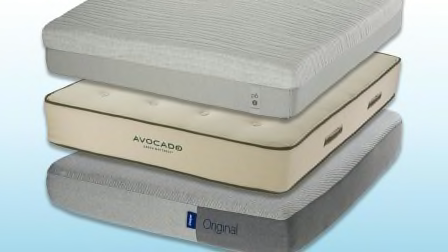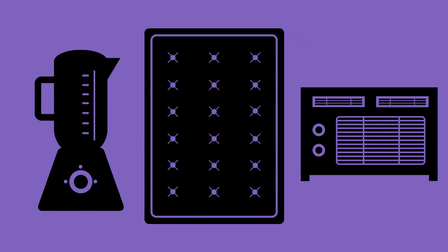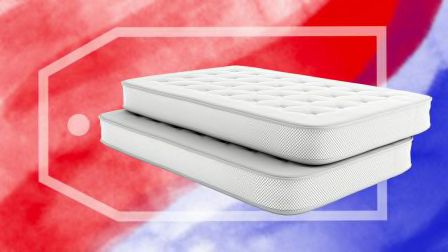How to Choose a Mattress Topper
The right topper may help you get a good night’s sleep, but it won’t fix an old, tired-out mattress
Whether you’re hoping for deeper, more restful sleep or a cushier way to drift off to dreamland, a mattress topper may be just the ticket.
Made of foam, latex, fibers, or feathers and typically 1 to 4 inches thick, toppers are designed to add a layer of cushioning to your mattress, and their popularity is booming. The global market was valued at $918.6 million in 2022 and is expected to reach $1.7 billion by the end of 2031.
- Mattress Toppers: Pros Cons
- Mattress Topper Materials
- Care Tips
Those numbers may not be surprising, given that 50 to 70 million of us struggle with chronic sleep issues in the U.S., according to a report from the National Institute of Health.
“A mattress topper can improve sleep comfort, and it may be used for pressure relief and temperature control,” says Marlis Gonzalez-Fernandez, MD, PhD, an associate professor of physical medicine and rehabilitation at the Johns Hopkins University School of Medicine. “But finding the right one is a very individual and potentially challenging decision.”
To help you make your choice, we’ve gathered intel on the various kinds of toppers available. Read on for details and advice on which may be right for you.
Mattress Topper Pros
Let’s start with the foundation: A mattress topper probably won’t make a mushy mattress more supportive, and it won’t fix a lumpy, worn-out one.
Mattress Topper Cons
Mattress toppers can have a downside, too. Some hold in heat, which can be a problem if you tend to sleep hot, regularly waking up sweaty and tossing off your covers.
“This is especially true with memory foam, a synthetic material that doesn’t breathe well,” says Buddy Delaney, president of Best Mattress in West Columbia, S.C., a manufacturer and retailer for 90-plus years. “You sink into it and much of your body is in contact with it. Air can’t circulate around you well and the heat becomes trapped.”
Mattress Topper Materials
The feel of a topper depends on its composition. Here’s a rundown of the various materials used, some well-rated brands, and prices:
- Memory foam. Some of the most popular toppers are made of memory foam, which gives you something to sink into. Many think of memory foam as really nice cushioning.
Many manufacturers have added graphite, gel, or copper to memory foam to address the heat-trapping issue, but it’s unclear whether it works.
“I am skeptical that there’s enough of those materials inside to make a difference,” Delaney says.
If sleeping hot isn’t a problem for you, highly rated brands include Tempur-Pedic (available at Amazon, Bed Bath & Beyond, and Tempur-Pedic), ViscoSoft (at Amazon and Viscosoft), and Layla (shop from Amazon and Layla). Expect to pay about $200 to $400 for a queen-size topper. (Queen-size mattresses are the top sellers, and it’s the size we test in the lab.) - Other types of foam. Egg-crate foam, convoluted foam, and polyfoam are less dense and cushy than memory foam and therefore less supportive. Silver lining: They’re also less likely to leave you roasting.
And they’re considerably less expensive, under $130—possibly even half that. Shop at Amazon, Bed Bath & Beyond, Target, and other large retailers. - Latex. Made from the sap of rubber plants, natural latex may be the springiest material, thanks to tiny air pockets throughout. It’s also naturally cooling. (Note that some latex toppers are a blend—say, 80 percent latex plus other materials.)
If you want an organic topper, look for GOLS (Global Organic Latex Standard) certification on the packaging. Well-reviewed latex brands include Saatva, Brooklyn Bedding, and Naturepedic (available at Naturepedic and Wayfair). Prices range from $300 to $800 for a queen-size, with 100 percent latex products at the high end. - Wool, cotton, and other fiber fills. These materials inside a topper can make it feel more like a fluffy, comfy pad than a deeply springy, supportive layer. But they tend to be breathable and naturally heat-regulating.
Prices often nudge into luxury territory. PlushBeds’ handmade natural wool toppers, for instance, are typically $800 and up for a queen size (at Amazon and PlushBeds). You may also see combinations of fills. For instance, Birch makes a topper that combines organic wool, organic cotton, and latex and costs about $450 for a queen-size.
When searching for sustainability options, look for GOTS (Global Organic Textile Standard) Organic certification, which guarantees 95 percent or more organic fibers; the OEKO-TEX Standard 100 label, which means a topper has been tested for harmful substances and is deemed harmless to human health; or GREENGUARD certification, which means the topper has been shown to have low chemical emissions. - Down, other feathers, and downlike fill. Like wool and cotton, they provide some fluffy padding but don’t deliver the kind of responsive support that memory foam and latex can. And they are less heat-trapping.
In terms of sustainability, toppers with downlike fill may carry the same certifications as those for the fibers above. For genuine down or feathers, look for ethical certification like RDS (Responsible Down Standard) or Global TDS (Global Traceable Down Standard), both of which indicate that the animals sourced were not subjected to any unnecessary harm. Price-wise, you may pay $150 to $500 for a queen-size topper. Look for brands such as Parachute and Pacific Coast (available at Amazon, Pacific Coast, and Wayfair).
Mattress Topper Shopping and Care Tips
A topper can add 1 to 4 inches to the height of your mattress. It’s important to keep this in mind as you shop, especially if you have a thicker-than-normal mattress. If you put a 4-inch-deep topper on a 15-inch-deep mattress, for example, you may struggle to get your sheets to fit. (Note that only some of CR’s top-rated sheets will fit an 18-inch mattress.)
And because the topper will lie directly on your mattress—under the mattress protector (if you use one)—you may want to look for one with straps to help it stay put, as well as a removable, washable cover, says Keith Cushner, founder of Tuck Sleep, a website that reviews sleep products.
Could cleaning be an issue? Almost no latex or foam mattress topper can be washed, only spot-cleaned, perhaps. For toppers filled with wool, cotton, down, or other materials, check the label for guidance. Some are dry-cleanable (such as Parachute’s down mattress topper) or machine-washable (like Brooklinen’s down alternative mattress topper).
Before plunking down your plastic, read up on the retailer’s returns policy. Unlike mattresses, there aren’t many opportunities to try out a mattress topper before you purchase one. But many retailers allow returns, so check before you buy. If you buy a Tempur-Pedic topper directly from the manufacturer, for example, it’s not returnable; purchase one from Costco and it is. Also, some brands have generous “tryout” periods; Saatva, for instance, gives you 180 days to return a topper for a full refund.
As for life span, a high-quality mattress topper will usually do its job well for at least three to five years. Some come with warranties, which may last up to 10 years or even longer. That could mean a lot more nights of satisfied slumber.


















